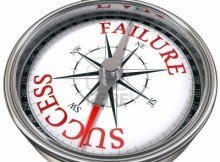With over 20,000 books and millions of articles about the critical elements of leadership and its overall impact, the issue of leadership really must be important to organisations.
Most organizations have lavish budgets and allot lots of time and effort on improving employee and manager capabilities and also nurturing new leaders. In the USA itself, companies spend almost $14 billion annually on various leadership programs and many colleges and universities now offer degree courses on leadership.
Moreover, in a study of 500 executives asked to rank their priorities, leadership development was listed by most of them. This shows how important the topic of ?leadership? is to most companies. However, many leadership development programs initiated to train employees on leadership skills and qualities fail due to lack of focus.
After getting in touch with hundreds of chief executives about their struggle and observing their more successful initiatives, a report by McKinsey has identified four of the most common leadership development mistakes. We discuss these along with some tips to overcome them in the article below.
Mistake Number 1: Overlooking The Real Need
A critical component of leadership development is reality and on ground situation. It is important to understand that a business leader in one situation does not perform the same way in another.
Most training initiatives are set on the assumption that one size fits all and the same style of leadership skills are required to be groomed into all leaders, irrespective of the organizational culture or strategy.
When designing a leadership program, it is important for the designers to understand the nature of the program. What exactly is the program for and who exactly would benefit from it?
It is very important to focus on the context and equip leaders with a small number of competencies or skills rather than trying to teach them everything. This is sure to achieve a much better outcome.
Moreover, leadership programs generally involve a one-time effort or a few training sessions. But learning about leadership requires revision, and the focus should be on regular experiential learning rather than cognitive learning.
Mistake Number 2: Implementing What Has Been Learned
When it comes to designing the development curriculum, many organizations face a balancing issue. On one side, there is value in off-site programs like university or college settings that offer students time to step back and flee from the pressing demands of a day job.
On the other side, even after basic training sessions, adults generally retain only 10 per cent of what they really hear in the classroom as compared to nearly two-thirds when they are learning by doing.
Moreover, many leaders find it difficult to extrapolate their off-site experience into real work scenarios. Hence, the importance of finding a balance between the two cannot be ignored.
The ability to train participants while also giving them real world experience to apply their newly learnt skills is a valuable combination in today?s business markets. Furthermore, it is important to integrate leadership development components into the project itself.
Mistake Number 3: Underestimating Mind Sets
To become an effective leader, it is important to change behaviour. While many companies do understand that this means changing underlying mind-sets, they are often reluctant to address the cause of why leaders act the way they do, as doing so can be uncomfortable for participants, mentors and trainers.
Moreover, even if there is no discomfort, the chances of them changing their behaviour are low. Moreover, leadership programs should also focus on increasing self-awareness and understanding of how their behaviour affects others, rather than just building competencies and skills.
Mistake Number 4: Not Having Concrete Metrics to Measure Effectiveness
It is often seen that companies pay lots of importance to development of leadership skills but do not ultimately quantify the value of their investment. When businesses fail to keep a track of leadership performance over time, they increase the chances of the initiatives not being taken seriously.
In most cases, evaluations to the leadership development program are given by participant feedback. However, if the scenario is moved to a business-performance program, the assessment or feedback is generally in the form of success or failure, which is probably more valuable.
So, if you are looking for robotic leaders ? train them. Alternatively, if you are looking for innovative dealers ? develop them over time with real-time experience and empowerment.
Jappreet Sethi











In this post information given is very useful. thank you for sharing such valuable information.